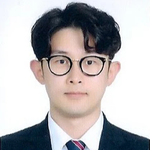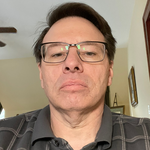- Opening Ceremony
- Manufacturing I: Introduction by the Moderator
Sooho Lee - Isolator Technology • Overview of Functionality, VHP Technology and Industry Trends
Matthias PoslovskiIsolators are widely used in the aseptic industry to create a closed, contained and controlled environment. The increasing use of isolator technology is an emerging trend in the pharma and biotech sectors.
During the presentation, you will get an introduction about general isolator working principals and decontamination principals as well as the differences in the design for high-potency vs. non high-potency isolators. In addition, the advantages of CFD and VHP simulations including integrated FAT to minimizing risk and reducing time to the market will be presented. - No-Touch-Transfer: Introduction of RTU Containers Into Aseptic Filling Environments
Dr Holger KranenburgNo-Touch-Transfer (NTT) has become established as a GMP and QRM compliant alternative methodology to introduce pre-sterilized RTU containers into aseptic filling environments. This alternative approach does not rely on disinfection steps applied on outer packaging layers. It is based on multi-layered packaging, sterility maintained through the supply chain and a process design of material transfers through changing GMP grades. In this process, the contents from the secondary bag packaging is ejected without direct contact or exposure to a lower grade of environmental control than the zone the material is entering into. With this methodology there is no need for in-process material disinfection steps like vaporized hydrogen peroxide or e-beam. The system design requirements and qualification approaches for this methodology will be presented to provide practical guidance for application with respect to contamination control zones and airflow characterization.
- Coffee Break
- Innovative Isolator Design for High Toxic and Biological Risk Aseptic Productions
Marco PreusTo keep up with injectable market evolution, pharmaceutical companies and CDMOs need to be able to manage a wide range of toxic/biological risks in different products and packaging types. When an injectable product includes highly biologically active components with e.g. viral vectors, the production process and the entire facility may have to comply with BSL-2 or even BSL-3 requirements, the increasing the complexity of equipment and processes tends to limit production flexibility. At the same time, any high-potent components, such as antiblastic products or monoclonal antibodies linked to cytotoxic components (ADC), may require the entire fill-finish system to qualify up to OEB level > 5, i.e. with release of contaminants outside the isolated environment in amounts lower than 1 µg/m3.
The presentation intends to demonstrate, through a case study, how it is possible to create innovative aseptic isolated production lines able to achieve this goal, using isolator with “full one-pass” ventilation approach. This solution makes possible to treat highly toxic products or products with a high biological risk, minimising the risk of cross-contamination in the ventilation and filtration system. The one-pass design required the creation of innovative balancing chambers and pressure control systems, capable of handling air flow rates three times higher than traditional isolators, while maintaining high pressure, temperature and humidity control requirements.
Thanks to the one-pass design, it is also possible to reduce the duration of tradition decontamination cycles even if a very low hydrogen peroxide residue (less than 0.2 PPM) is requested. A series of studies were carried out for the optimization of the decontamination cycles with spectrometric instruments for analysing the concentration of hydrogen peroxide up to residues of 100 ppb, to avoid any risk towards easily oxidizable products.
Finally, it is analysed the inlet and outlet filter configuration, wash-in-place automatic systems and how the same isolated line can switch from hazardous to non-hazardous products, leveraging the pressure cascade flexibility between the isolator chambers. - Glove Integrity Testing for Barrier Isolation Technology
Simone BertoniGlove Integrity Testing is becoming an increasingly common testing procedure for every pharmaceutical company that has to work with barrier systems for containment and aseptic processing. Regardless the barrier system, the weakest point lies in the gloves.
Since 2008 “EU GMP Annex 1” reiterated the importance of performing glove integrity testing: ”Monitoring should be carried out routinely and should include frequent leak testing of the isolator and glove/sleeve system”. As an updated Annex 1 is about to come out in its final release, the importance of this test will be more relevant than ever.
Considering that Gloves Integrity Testing is going to be almost a daily routine test for every company involved with isolation technologies, it has to be carried out with a validated procedure.
The presentation is going to show the complexity of this test, proposing a repeatable and reliable validated procedure based on the Pressure Decay Method. This method, which follows the international standard ISO 14644-7 Annex E.5, foresees the inflation of the glove up to a target pressure (1000 Pa) and the monitoring of the pressure decay. A correlation between pressure and pinholes size can be proven.
Considering a very frequent testing routine, the test has to be both reliable and fast. Data and results obtained during several experimental campaigns will be presented, allowing to understand the different variables that can influence the testing procedure. - De-risking Drug Delivery through the Use of Fully Coated Elastomeric Closures
Ashwini BhisikarThis presentation will focus on innovations in the manufacturing of parenteral packaging components to address the demanding needs for packaging sensitive drugs such as biologics.
The agenda of presentation will include.
• Common concerns in the pharmaceutical industry surrounding parenteral packaging
• Advancements in products and processed to achieve best-in-class specifications, with a focus on ‘zero-defects’
• A quality by design approach for manufacturing components to mitigate industry concerns that relate to particulate and silicon contamination - Panel Discussion and Q&A
DeokSeok Oh•Wilson Mizoguchi•Matthias Poslovski•Dr Holger Kranenburg•Marco Preus•Simone Bertoni•Ashwini Bhisikar
DeokSeok Oh
QA Lead (NPI and Commercial), Janssen Vaccines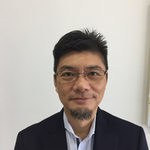
Wilson Mizoguchi
Head of Market Development South East Asia, Datwyler Pharma Packaging
Matthias Poslovski
Vice President Sales, OPTIMA pharma GmbH
Dr Holger Kranenburg
Senior Scientist, GMP Compliance, Franz Ziel GmbHMarco Preus
Aseptic Processing Solutions, Sales Director for the APAC area, IMA S.P.A. - IMA Life division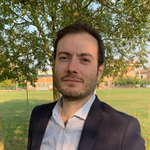
Simone Bertoni
Area Manager Asia Pacific, Tema Sinergie S.p.A.
Ashwini Bhisikar
Technical Key Account Manager, Datwyler Pharma Packaging
- (Product Demo by Datwyler) Datwyler Helps to Improve Patients’ Lives. Because We Care.
Cathy Joa - (Product Demo by bioMerieux) 3P® ENTERPRISE • An Innovative EM solution
Hyongwon KwonEnvironmental Monitoring (EM) is one of the main microbiological controls that the biotechnology and pharmaceutical industries perform.
This ensures the safety and efficacy of pharmaceutical products and is a critical control to consider when companies release their finished drug products to market.
So, EM must be robust and reliable at every single step.
The 3P® ENTERPRISE solution has been developed by bioMérieux to fully address the daily industrial challenges of EM.
3P® ENTERPRISE is an emerging system combined with three key products.
3P® ENTERPRISE provides an end-to-end solution that fully digitalizes and automates the EM process
The first part of the solution is the 3P® SMART PLATES. This plate has GS1 barcode labeling, it can make clear traceability.
3P® CONNECT software** is the second part of the solution. The software automatically and immediately collects, tracks, and saves all the actions and data related to EM. This removes the paperwork process and so decreases the risk of errors and win time during the entire EM process.
Finally, there is the 3P® STATION, an instrument that automates the incubation and counting of microbiological colonies on EM Petri dishes in real-time. A combination of high-performance algorithms and high-definition images taken every hour means that there is a standardized reading of plates - no human error - and alerts raised should a sample exceed its specification, allowing rapid corrective actions. - Lunch Break
- Manufacturing II: Introduction by the Moderator
Marco Preus - Janssen's Case Study on Aseptic Operations with Focus on EU GMP Annex 1 Requirement
Sooho LeeThe EU GMP Annex 1 revision provides more comprehensive requirement from the regulatory with significant improvement over the current version. This session will focus on overall training program covering from training, Aseptic Process Simulation (APS) and qualification of the aseptic operators to meet the requirement from EU GMP Annex 1 revision. The session will share the aseptic operator training program improvements made at Janssen utilizing mock RABS. The operators trained with mock RABS are qualified through aseptic process simulation by demonstrating adequacy of aseptic behavior and interventions. The session will cover the training program as well as the qualification program. In addition, current QA oversight program and oversight personnel training program at Janssen will also be shared.
- A Roadmap for Developing a Pass Thru Decon Best Practice
Jim Polarine Jr.This seminar will cover a risk-based approach to pass thru decon of critical items into cleanrooms and RABS as well as cleaning BSC Hoods. There will be a focus on how to control hard to kill fungal spores such as Aspergillus and Chaetomium as well as bacterial spores and viruses. Recent case studies from the past few months in cell and gene therapy and compounding pharmacies will be discussed in relation to pass thru decon. Published data will also be mentioned to convey effective methods in control bioburden into the APA. This presentation well be a holistic approach to controlling bioburden from entering BSC Hoods and cleanroom operations.
- Aseptic Robot Operations in Vaccine Manufacturing
Martin DüblinThe dynamics of the industrial revolutions are growing continuously and are more and more noticeable. Industry X.Y leads us through constant transformations unstoppably in all areas of life into new structures and new life forms. Opportunities and possibilities open up, risks get mitigated. Structures known today and regarded as set are changing due to new operational processes, changed work areas, robotics, automation, as well as expanding and far-reaching to complete digitalization.
What does this mean for the life science industry? Are these new technologies even applicable for vaccine productions? Questions like these will be addressed in this lecture. Hereto case studies are presented where the aspects show the technical evolution so far. But not only the state of the art is addressed, as well the view into the next generation of solutions is touched. And last but not least controversial topics are covered for transparent views. - Panel Discussion and Q&A
Marco Preus•Sooho Lee•Jim Polarine Jr.•Martin Düblin - Coffee Break
- Industry 4.0: Introduction by the Moderator
Javier Camposano - Plug and Produce – Getting the Most Out of the Machine Data by Cooperating with Machine Builders • Bausch+Ströbel
Tobias Wetzel•Steffan AuwärterFor many years, the pharmaceutical industry has been moving towards a connected world. When connecting the complex Bausch+Ströbel filling lines to higher-level systems, a lot of energy needs to be devoted to the identification and connection of the relevant sets of data, the creation of the logical structures and the addition of contextual information. Furthermore, an intelligent evaluation and analysis of the runtime data requires a significant amount of time and effort. With the OMNIA platform Bausch+Ströbel has developed a solution that provides a ready-to-use integration and value-added services already on the day of delivery. The applications can span from GMP and process monitoring, to automatic troubleshooting support or advanced efficiency and maintenance evaluations. All these use cases are centralized in one place – the Bausch+Ströbel OMNIA platform.
- Incorporating AI (Deep Learning) into Existing Vision Configurations for Cosmetic Defects
Uwe SchäferThe presentation shows a used case of our Ejext X (Inspectif AI) technology, which will explain and demonstrate how this technology will develop automatic Inspection machine recipes and what results we can achieve with that.
It is demonstrated on a Lyo Cake Camerastation at an installed machine at customer site to improve the detection for defects as well as reduce False rejection as much as possible with the problematic of unstable lyo cake condition due to the product. - Digital Innovation & Transformation in the Pharma & Life Science Industry
DongChoul JangThrough this presentation, Mr Jang DongChoul will lay out from Siemens' perspective what challenges the pharmaceutical and life sciences industries are currently undergoing and what digital technologies should be embraced to solve the latest challenges.
Due to new diseases and new drugs, the need for innovation and transformation is emerging in the field of research and development and manufacturing. Attendees will learn how the pharmaceutical industry has used digital technology and IT/OT convergence to adapt and accommodate these new requirements, as well as how it is driving future manufacturing environments and where the pharmaceutical industry is headed. - Panel Discussion and Q&A
Javier Camposano•Uwe Schäfer•Tobias Wetzel•DongChoul Jang
- Advancements in Glass Technology: Introduction by the Moderator
Gabriele Peron - PDA TR 43 (Identification and Classification of Nonconformities in Molded and Tubular Glass Containers for Pharmaceutical Manufacturing: Covering Ampules, Bottles, Cartridges, Syringes & Vials) Revision Update (VIRTUAL PRESENTATION)
Carol Rea Flynn (Virtual)•Jack Gill (Virtual)Jack Gill will co-present remotely with his PDA revision team co-chair Carol Flynn on TR43 updates. The presentation will focus on changes in this routine revision process that were implemented in 2022. A team of representatives from the Pharma Industry as well as primary container manufacturers spent 2 years reviewing the alignment of the document with current thinking on the criticality of defects, applicability of defects by container type, and suggested proactive approaches to reduce these defects through continuous improvement activities. The process began with the goal of reducing potential for patient or user injuries, loss of manufacturing efficiency and line clearances, and product recalls and worked through how to tie that into a continuous improvement program.
- What are Regulatory Agencies asking for when dealing with Extractables & Leachables testing on Pharmaceutical Packaging Systems
Sona KovackovaThe FDA Draft Guidance “Container/Closure Systems for Packaging Human Drugs and Biologics” was issued in 1999. But in the past decades, there has been a change in the scrutiny of the FDA reviewers looking at E&L data. They have gradually increased the requirements, and for a long time not backed up with any official document until recently by issuing the USP<1663> on assessment of extractables, USP<1664> on leachables and PQRI on best practices for extractables and leachables in parenteral drug products.
In this presentation, the key factors of success of any given E&L project will be highlighted. Crucial is to understand what regulators really want and aligning the design of an E&L study to their expectations.
Only through successful partnering between drug product manufacturers, material suppliers, CRO performing the study and final evaluation by a toxicologist, a true mitigation of the risk related to packing can be established. - How to Achieve Low Dead-volume on Glass Pre-fillable Syringes: A PFS Manufacturing Perspective
Enrico BarichelloIn general terms, a prefilled syringe is preferred if ease of use or patient experience are more important than speed or when minimizing product waste is important. As product wastage, there is an indisputable advantage to use syringes, thanks to low overfill needed and accurate dose delivery, especially in some therapeutics areas. The high necessity for drug savings - driven by Covid-19 pandemic for example - coupled with the new wave of high-value biologics with extremely high production costs, every optimization strategy must be explored.
This presentation intends to show the impact of the internal shape of the glass cone on the dead volume, the main contributions from both the glass container and plunger stopper, as well as the strategy to mitigate the risk of drug loss and next development steps. - Panel Discussion and Q&A
Enrico Barichello•Carol Rea Flynn (Virtual)•Jack Gill (Virtual)•Sona Kovackova•Gabriele Peron
Enrico Barichello
Product Manager, Stevanato Group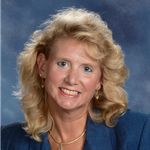
Carol Rea Flynn (Virtual)
Glass Converting Quality Manager, LST, Corning Pharmaceutical TechnologiesJack Gill (Virtual)
Senior Manager, Supplier Quality, Pfizer
Sona Kovackova
Study Director, Nelson Labs
Gabriele Peron
Senior Marketing Advisor, Stevanato Group S.p.A.
- Coffee Break
- Regulatory Updates: Introduction by the Moderator
Max Fernandez - Framework for Vaccine Regulations in Korea
In-sook ParkThe Ministry of Food and Drug Safety (MFDS) is evaluating the quality, safety and effectiveness of vaccines in life cycle from the pre-clinical stage to post-marketing stage. This process is stipulated in detail in accordance with a series of legal systems from the highest law, the Pharmaceutical Affairs Act to the guidelines. In this presentation, under the theme of ‘Frameworks for vaccine regulation in Korea’, the following three things will be presented: (1) Introduction of MFDS and vaccine authorization process in Korea, (2) the current status of vaccines development & approval in Korea and the activities of the MFDS, and (3) the role of the MFDS as a regulatory body for the past three years in relation to the COVID-19 pandemic.
- Preparing for the New Era of Hybrid FDA Pre-Approval/ Licensing Inspections
Jo WangThe U.S. FDA has long aimed to strengthen its use of remote inspection and integrate desk-based assessments with traditional on-site visits. The pandemic has dramatically accelerated that evolution. Welcome to the new era of hybrid inspections. Regulators have found that remote inspections are a very useful and cost-effective tool complementing CGMP compliance verification. With the addition of the virtual component, there is a corresponding increase in the number of investigators and SME on the inspection team. In some recent hybrid pre-licensing inspections for biologics, an inspection team size totaling around ten investigators was reported. What do you need to know to be ready? Come learn about how FDA conducts hybrid biologics / small molecules inspections and best practices for preparing for your pre-approval/licensing inspections. After all, suppose things do not go well, the follow-up re-inspection may not be scheduled for some time, significantly delaying regulatory approval and commercial manufacturing.
- FDA’s Regulatory Assessment and Inspection Program for Biologics License Applications
Zhihao Peter QiuApproval of a Biologics License Application is based on an integrated assessment of the product and facilities and upon determination that the product and facilities comply with the standards established in the application and the Good Manufacturing Practice requirements. This presentation will introduce FDA’s regulatory requirements for Biologics License Applications and the CGMP requirements for biotech manufacturing.
This presentation will cover the following topics:
1. Relevant Laws, Regulations, and Guidance for Biologics License Applications,
2. Regulatory requirements for Biologics license applications,
3. The integrated BLA review and inspection program, and
4. A risk- and system- based Pre-License Inspection program of manufacturing facilities. - Panel Discussion and Q&A
Max Fernandez•In-sook Park•Jo Wang•Zhihao Peter Qiu
Max Fernandez
Vice President, Intellective Bio
In-sook Park
Head of Biopharmaceuticals and Herbal Medicine Evaluation Department, Ministry of Food and Drug Safety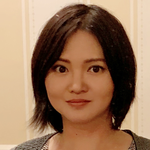
Jo Wang
Vice President Technical, Regulatory Consulting Services (Compliance), Parexel International
Zhihao Peter Qiu
External Advocacy Lead China, Global Quality and Compliance, Roche Genentech
- (Technology Talk by Merck) BioReliance® GMP Closed Processing – Reduce the risk of cross-contamination in your cell bank manufacturing
Feng Huixing - Lunch Break
- Quality Assurance and Biotherapy Production: Introduction by the Moderators
Ivy Louis•Hue Kwon - Criteria to Select and Qualify Single Use Components
Dharti PancholiThis presentation provides guidance on the elements of selection and evaluation of Single-Use systems or components. Implementation of Single-Use Systems (SUS) starts with an effective selection of Single-Use components. This is a comprehensive guide to the selection and use of Disposables, as well as the rationale for selecting Disposable over traditional manufacturing systems such as stainless-steel tanks. A focus of the presentation will be on qualifying Disposable for their appropriate use in a process, with particular emphasis on issues that regulators have expressed concerns about, including Extractables and Leachables, and highlighting criteria to select and qualify Single-Use components. The evaluation emphasizes risk management methods to identify the Single-Use components that are best qualified to meet the requirements of your processes.
- Aseptic Operations in Vaccine Manufacturing
Ashish Sahai (Virtual)Aseptic technique is a way to prevent viable microbial contamination during manufacturing of a sterile product. Injectable vaccines have to be manufactured by a stringent aseptic process. This may also be extended for intranasal and oral vaccines. Various ways are used during bulk production which may include 0.1 micron filtration for media and buffer preparation, test for bioburden at various stages and testing for sterility. Blending, filling and lyophilization form a part of filling operations. Aseptic handlings starts with class grades for manufacturing area where aseptic operations are done in Class A with class B background. Gowning qualifications of individuals are strictly followed for Classified areas. Area is monitored by Environmental Monitoring activity. For filling operation RABS ( Restricted Access Barrier System) can be utilized in fill-finish area. Stringency in filling is very vital because there is no fall back mechanism besides rejection of the product.
- Coffee Break
- BioManufacturing: Implementation of Novel Systems (VIRTUAL PRESENTATION)
Dr. Alison Armstrong (Virtual)•Feng HuixingRecent advancements in bioprocessing have supported the accelerated growth of the biopharmaceutical industry. With the advent of continuous biomanufacturing safety of biologics products continues to be accomplished by a multi-tiered approach involving safety testing measures throughout the development and manufacturing process. The safety program starts with raw material control and involves in-process and bulk lot release tests and evaluation of the manufacturing process to inactivate or remove viruses.
Recent advances in technologies have enabled more effective and directed end point analysis for such studies. These include methods such as nucleic acid testing, automated analyses, marker analysis, genome assessment and updated approaches to viral clearance. The key controls required to perform such testing are critical and qualification of such test to provide suitable results are necessary.
This presentation will provide specific examples of study design, technology advances and regulatory expectation while performing such safety studies. - Smart Quality Monitoring in Pharmaceutical Industry
Juliana GutierrezThe Contamination Control Strategy (CCS) should be implemented on all critical control points across the manufacturing to ensure process efficiency as described on EU Annex 1. The effectiveness of the contamination controls should be frequently assessed, actively updated and be able to drive continuous improvement of the manufacturing. It is possible to use appropriate technologies like rapid microbial testing along the process to protect the product and rapidly detect any contaminants.
Optimization through smart monitoring all along the process to prevent deviations and improve process productivity could help achieve benefits such as lean manufacturing, cost efficiency, higher throughput and minimal waste. - Panel Discussion and Q&A
Ivy Louis•Hue Kwon•Dharti Pancholi•Ashish Sahai (Virtual)•Dr. Alison Armstrong (Virtual)•Feng Huixing•Juliana Gutierrez
Ivy Louis
Director, Vienni Training and Consulting LLP
Hue Kwon
Vice President and Quality Team Leader, Samsung Bioepis
Dharti Pancholi
Executive Vice President and Global Managing Director, PharmEng Technology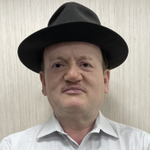
Ashish Sahai (Virtual)
Director, Viral Vaccine Production, Serum Institute of India Pvt. Ltd.
Dr. Alison Armstrong (Virtual)
Senior Director and Global Head of the Technical and Scientific Solutions, Merck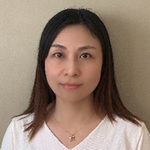
Feng Huixing
Field Technology Manager, Merck KGaA
Juliana Gutierrez
Scientific Affairs Manager ASPAC, Industrial Microbiology, bioMerieux
- Closing Remarks



